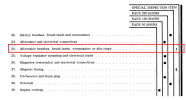ahmad
Pre-takeoff checklist
Flying with a buddy of mine in his C182 last night. 4 miles out before we enter the downwind poof everything goes black. Pitch black inside the cockpit. He is freaking out a bit. Ok just fly the damn plane. There is a reason why we practice no flap landings and do all those things before we get that license. Someone else had just landed before us so the rwy lights were on. His night landings have not been too good so I coach him in the downwind, base, and final. He greases it this time and says "hmmm go figure I land better in the dark". lol
Well, maybe you need to land blind from now on. At least now we have a cool story to tell our grandkids when we are old. Wait, you are 75. You are old.
Well, maybe you need to land blind from now on. At least now we have a cool story to tell our grandkids when we are old. Wait, you are 75. You are old.

